METADATA
Holbein Glitch, Metadata, Lethaby Gallery, London January 2018
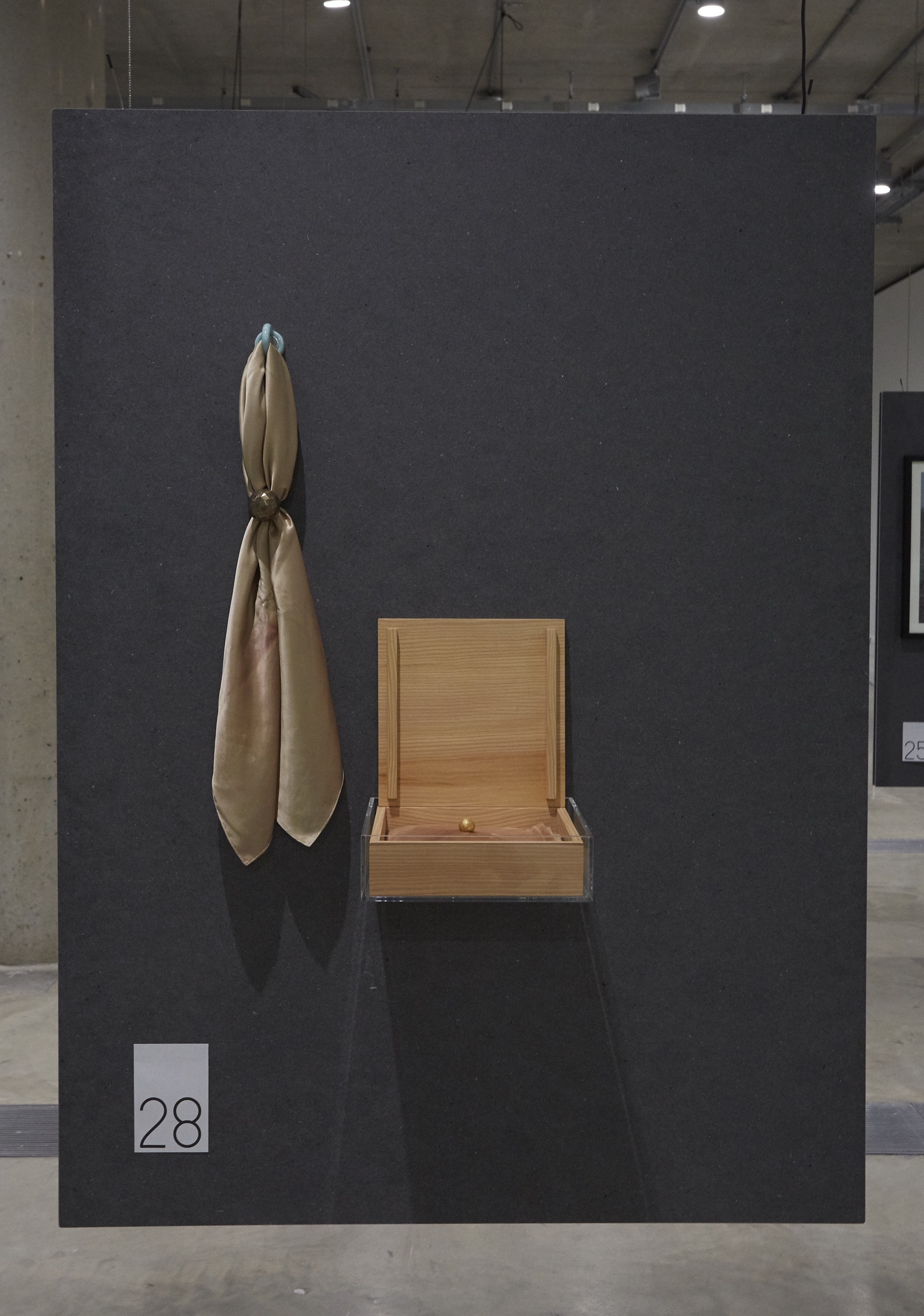
Holbein Glitch:
1. steel 3D print [binder jetting] - 42x 6 x 43 mm
2. polished, gold plated stainless steel 21 x 21 x 18 mm
3. digitally printed silk scarf 900 x 900mm
4. digitally printed velvet scarf 900 x 900 mm
5. celadon glazed 3D printed ceramic hook.
6. cedarwood box 249x251x61mm
Metadata: How we relate to Images, Lethaby Gallery, London
Curated by the Bilderfahrzeuge Group, The Warburg Institute
Nora Al-Badri and Nikolai Nelles | Alexander Burgess | Hussein Chalayan | Matthew Clarke | Joyce Clissold | Carole Collet | Sarah Craske, Dr Simon Park and Dr Charlotte Sleigh | Matthew Darbyshire | Rosemary House | Lauren Jetty | Edward Johnston and Violet E Hawkes | Owen Jones | Lottin de Laval | Richard Long | Nicola Lorini | Alfred Maudslay | Louisa Minkin | William Morris and John Henry Dearle | Noel Rooke | Henrietta Simson | Jeremy Wood
Exhibition Dates: 10 January 2018 - 3 February 2018
Publication: Metadata ISBN 9781527218451
DRIFT
Ambassadors, Drift, Thames-side Studios, London, January 2019
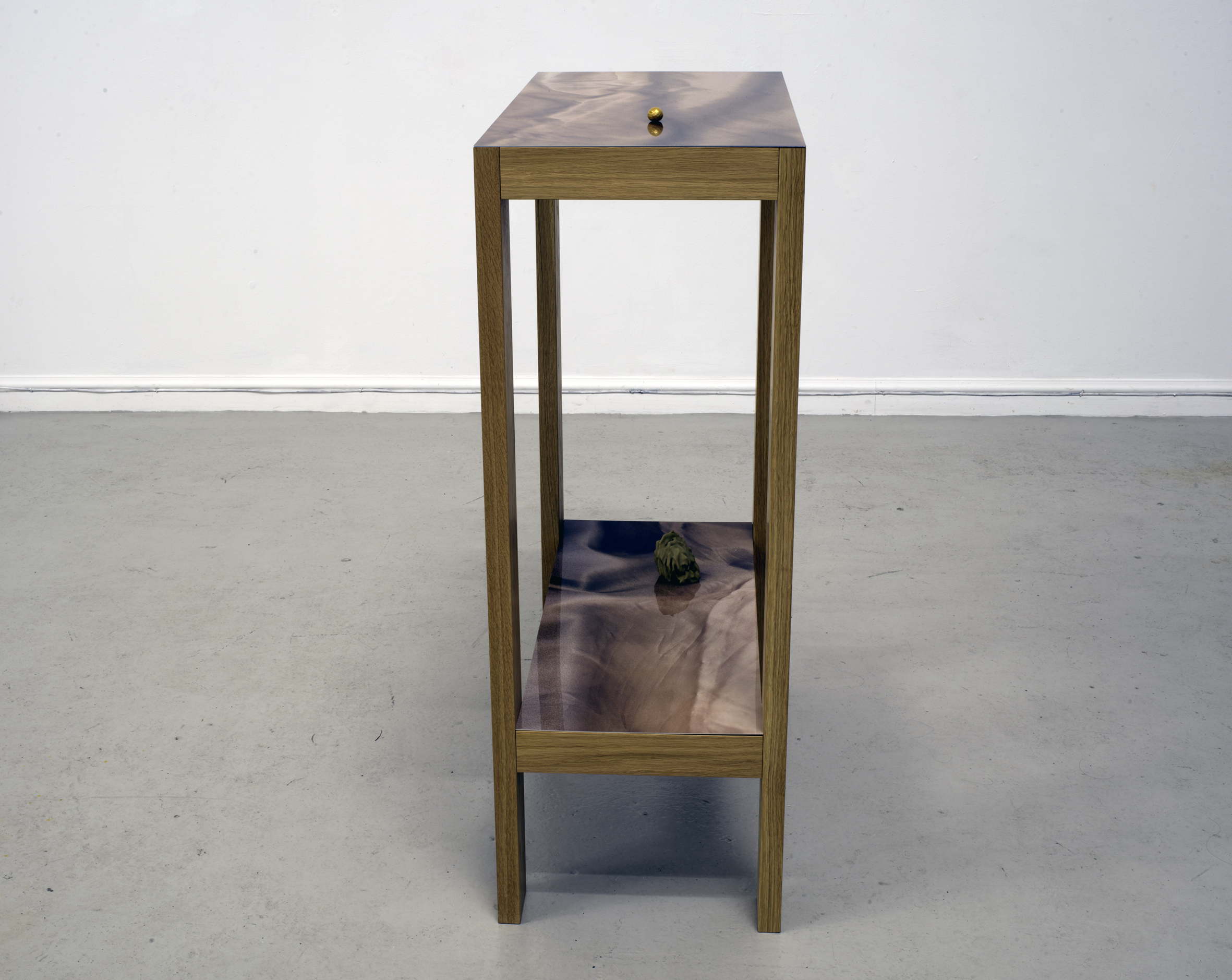
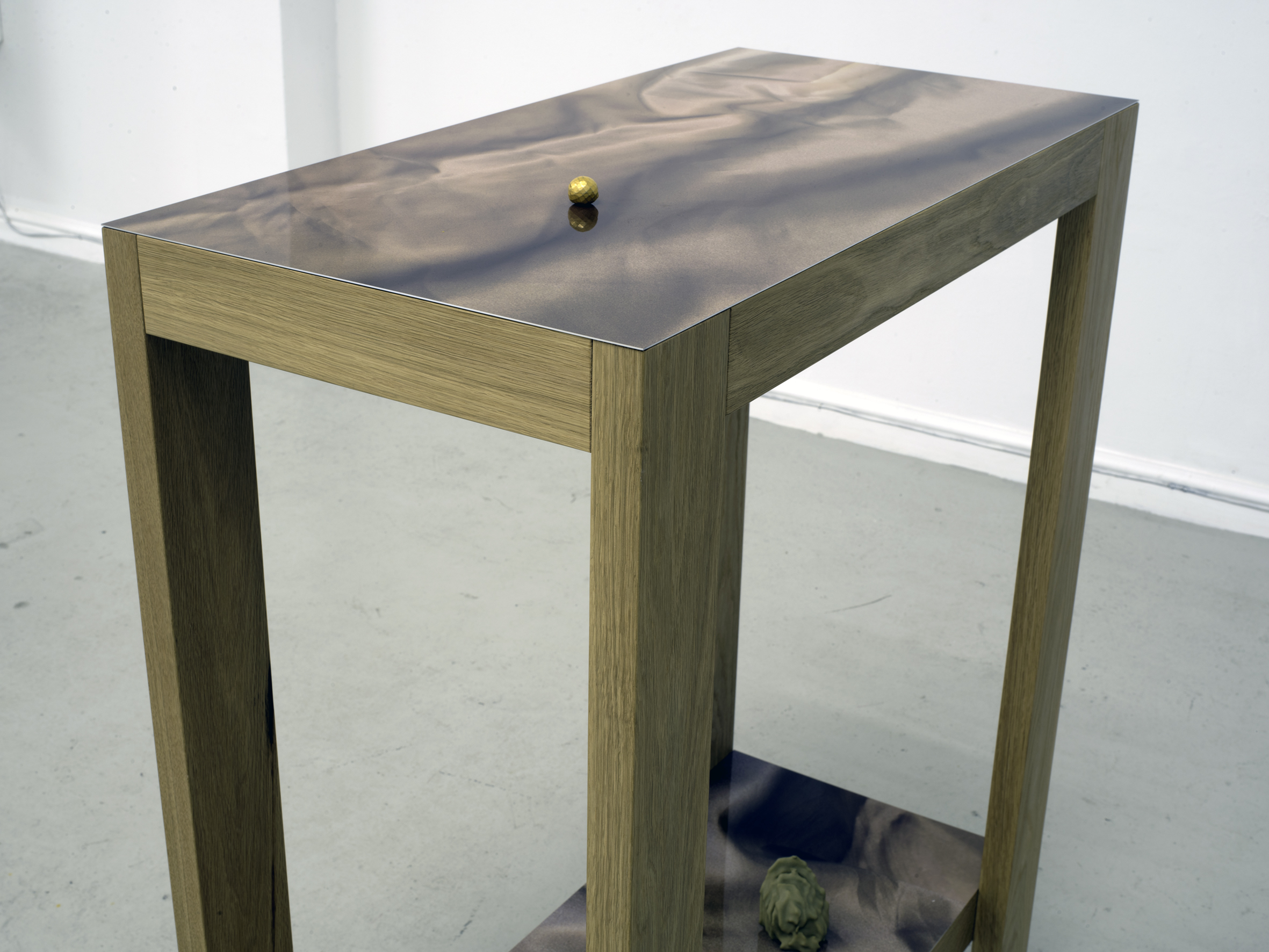
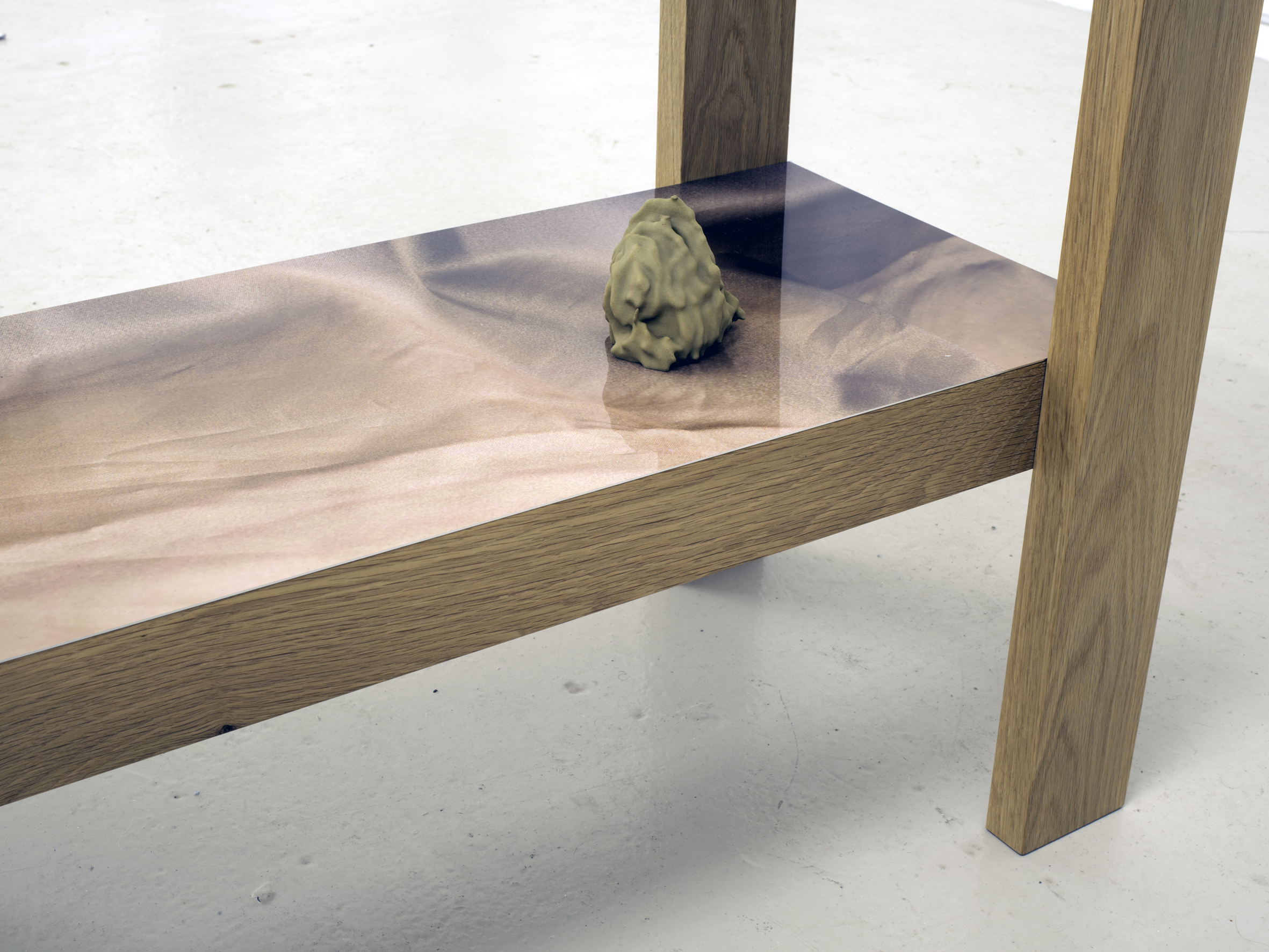
Ambassadors:
Oak table 800mm x 400mm x 1200mm
Shelves - high definition digital print on aluminium
Objects:
Fouquet's Rock: 3D nylon print
Holbein Glitch: polished, gold plated stainless steel 21 x 21 x 18 mm
Chalk lump from Dover wrapped in digitally printed lycra skin.
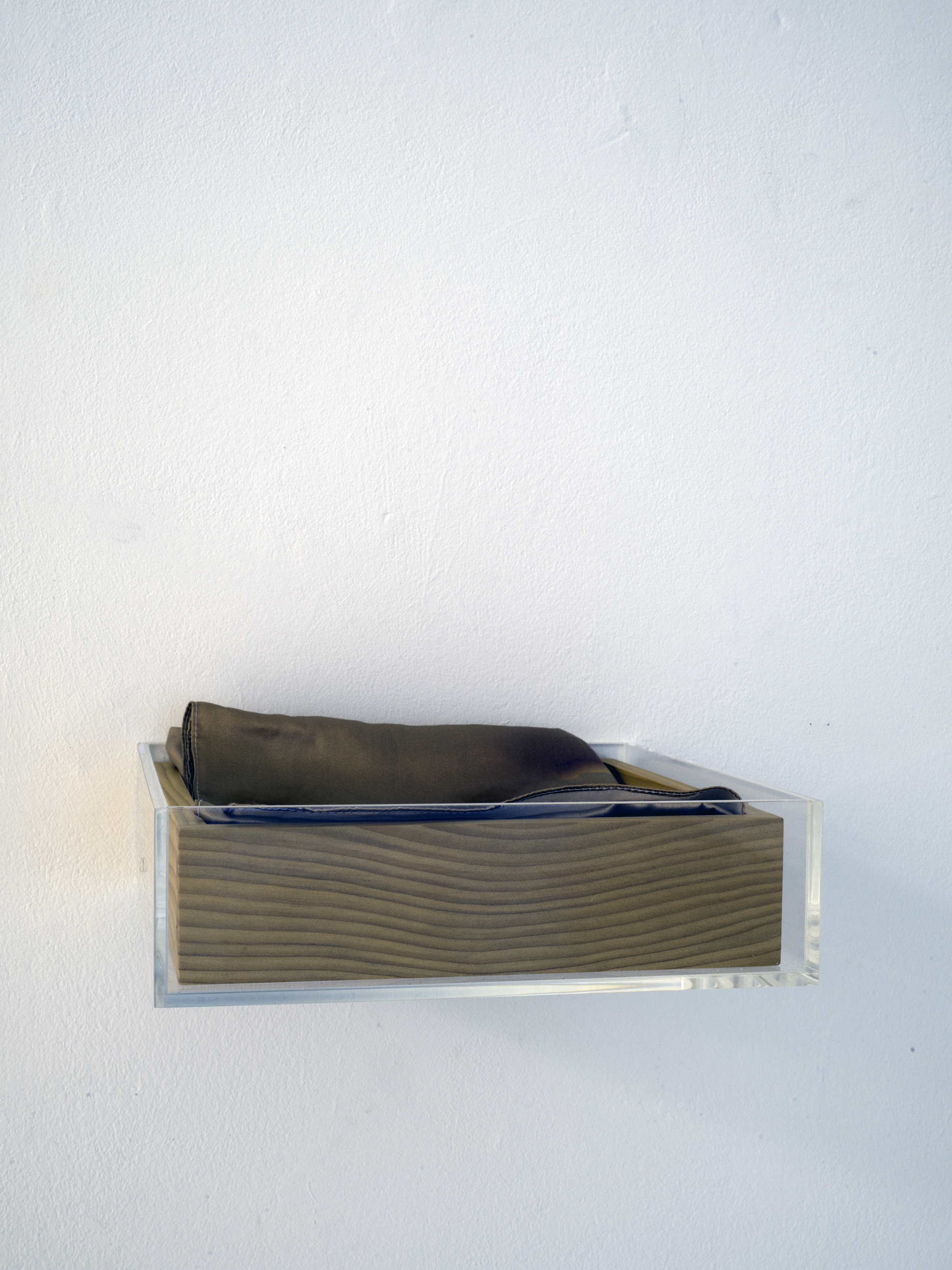
Cedarwood Box 249x251x61mm containing digitally printed skin files: silk scarf 900x900mm, velvet scarf 900x900mm
Drift, Thames-Side Studios Gallery, London.
Jesse Ash | Bernd Behr | Bernice Donszelmann | Cath Ferguson | Mary Maclean | Louisa Minkin | Tim Renshaw | Helen Robertson
Exhibition Dates 12-27 January 2019
For an artist to engage with the work of another in the act of drawing from, reworking or copying is to participate in a renegotiation; existing material is repositioned, removed, disturbed, recalibrated, processed …. allowing relations to become fluid and unfixed.
In One Way Street Walter Benjamin draws an analogy between the Chinese practice of copying books and its impact on Chinese literary culture and the act of walking and following a road vs the view of the same road from an airplane:
The airplane passenger sees only how the road pushes through the landscape, how it unfolds according to the same laws as the terrain surrounding it. Only he who walks the road learns of the power it commands, and of how, from the very scenery that for the flier is only the unfurled plain, it calls forth distances, belvederes, clearings, prospects at each of its turns… Only the copied text thus commands the soul of him who is occupied with it, whereas the mere reader never discovers the new aspects of his inner self that are opened up by the text…
As such, for Benjamin, the power of following or submerging oneself in the world of an existing text means that the renegotiation is not just with the material at hand but an internal renegotiation on the part of the copyist/artist. Copying is, thus, not simply a submission to a past canon but a testing of what the encounter itself, the embedding of oneself in the work of another, can do to open up to new prospects in the present moment.
‘Drift’ concerns itself with artistic acts of repetition, reworking and re-enactment as a mode of encounter that gives new form to what might otherwise be latent, creating relations that are alive and tending to a new situation. The artists in this exhibition share an interest in the material and conceptual potentials of this encounter: how renegotiation of pre-existing works or found material – both historical and contemporary – opens up a potential to think anew through new movements of meshing and reverberation.
Curated by Outside Architecture
The works exhibited in Metadata and Drift take and rework fragmented data harvested from reproductions of Holbein’s Ambassadors through productive misuse of structure-from-motion photogrammnetry, focus-stacking and additive manufacture.
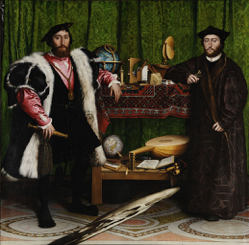
The work in Drift comprised an assemblage of objects. Each piece is a residue of another work; a recursive fictional form. To perceive an artifact in substitutional terms is to understand it as belonging to more than one historical moment simultaneously.
Part of the assemblage - Holbein Glitch and the cedarwood box and silk - was first shown in the Metadata show curated by the Warburg Institiute's Bilderfahrzeuge in 2018. These works were derived from aggregated images of Holbein's painting The Ambassadors The images were sourced from google and compiled in photogrammetric software. They failed to compile and prolapsed a lump which is rendered as material distillation of the painting. A diplomatic gift.
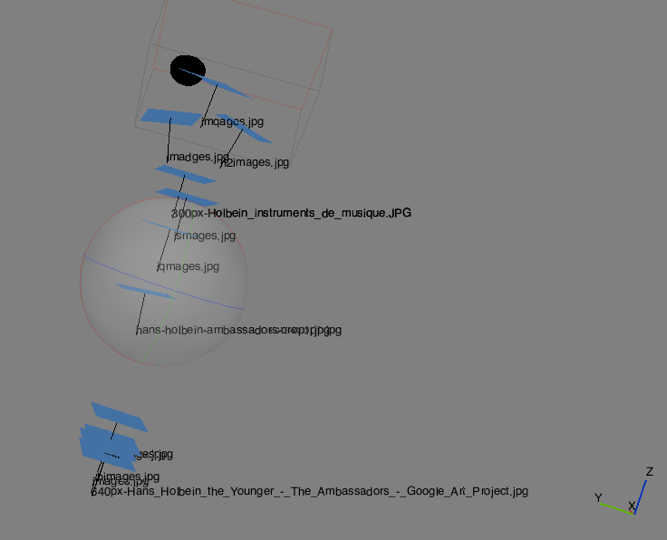
One iteration of the digital file is the gold-plated, laser-sintered steel 3D print on the shelves in the Drift exhibition. It looks a bit like a Ferrero Rocher chocolate. This was also produced as a scarf ring in Metadata. These souvenir objects have uncertain spatio-temporal status.

The digitally printed, folded silk square in the cedarwood box is the skin file or UV map of the same object. Unfolded it looks a little like a print of a Fontana painting. The square is the same size as a Gucci scarf. It smells good and is moth free from the cedar.
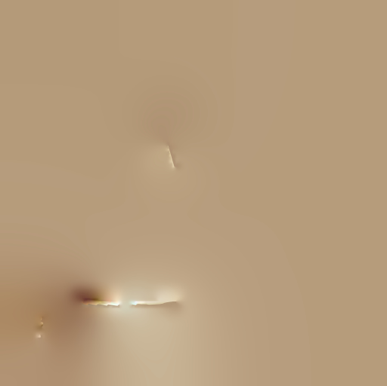
The shelves in the show are derived from the Ambassadors painting. These are approximate in size and scale, made by measuring against the body. They were fabricated from milled oak by Gordon Dawson.
The aluminium surface of the shelves themselves is printed with focus-stacked images of the silk square. These are entitrely synthetic images, comprised of about 15 photographs each.
On the botton shelf is a nylon 3D print entitled Fouquet's rock. This is a scanned and approximate copy of a hand made reconstruction of the knapped flint artefact which sits on St Stephen's book in Fouquet's painting.
The scanned objects and spaces function as a 'material store' for further interventions through interactive platforms including online environments and Virtual Reality applications.
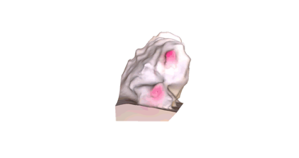
The Melun Diptych is best known by its right-hand side which resides in Antwerp: “The Virgin and Child Surrounded by Cherubim and Seraphim”. The colours are ‘unnatural’: red and blue angels operate as a ground for the chalk-white virgin. She wears an ermine cloak and a blue dress. Her corset has been unlaced to expose one round breast. The diptych was painted by Jean Fouquet in the 1450s
. 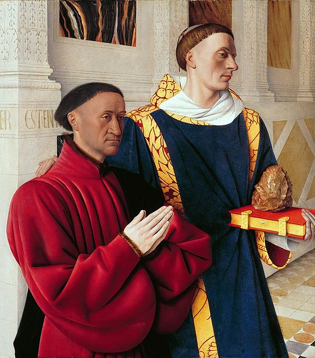
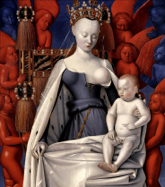
The hinged panels would have opened up like a cockleshell. Disarticulated at some point, a primal split, the left-hand panel is now in Berlin. In it the donor, Etienne Chevalier, kneels beside Saint Stephen in a perspectival space. There is a Cosmati floor and geological samples have been inlaid into the walls. St. Stephen holds a red book clasped with gold. Balanced on it is the rock that killed him. You can see clearly where it hit the back of his head. The blood drips down thickly, but in the moment of the painting it will never get to sully his white surplice.
Fouquet’s rock is clearly an observational painting of a very magnificent knapped flint. St. Stephen has been hit in the head by the ancestor. The trajectory of the flint passes through the painting, an historic moment of stasis, but the flint itself is likely still extant somewhere, tumbling in time, still in motion.
The panels of Fouquet’s painting, reunited virtually, offer an extraordinary visual discourse on bounty and austerity: the breast and the flint, bodies and objects, geology and cosmology, wounding and feeding.